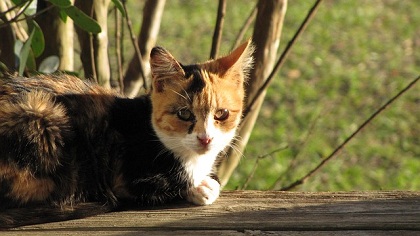Cats and Flu
Cats and Flu
Flu is a relatively common ailment that affects cats. It usually passes without further complications, but some cats like immunosuppressed, senior, and kittens can experience more serious effects than normal. The symptoms do not differ much from humans’. Infected cats have a running nose, red and swollen eyes, lack of appetite and lethargy. Some cats feel pain in their joints and can limp while walking. It is not uncommon for cats to get an ulcer in the mouth or tongue. For that reason, they can avoid food. Their meals are not pleasurable anymore; they are now a source of pain. Some even get ulcers in their paws. These cats require an immediate visit to a vet because they can easily become dehydrated. Pregnant cats frequently abort kittens or give birth to an infected litter. Whatever the symptoms cat has, feline experts recommend an urgent check-up. Two main causes trigger cat flu or upper respiratory infection (URI) – Feline Herpes Virus-1 (FHV-1) and Feline Calicivirus (FCV). The first one can cause more serious problems for a cat. The other one often causes swollen eyes with discharge, which needs a simple treatment with eye drops or ointment. In many cases, the both types of infections pass easily and last from one to two weeks. To find out more about treatment for cats who catch the flu, the article “Cat Flu” gives us detailed perspective.
Cats and Flu
There are no effective antiviral drugs in common use. Antibiotics may help because, just as in human flu, once the virus has damaged the delicate lining of the nose and airways, bacterial infections can enter and cause complications, such as pneumonia.
Nursing care at home is important. A blocked nose and mouth ulcers may stop a cat eating and drinking, leading to dehydration, which can be particularly dangerous in kittens. Because your cat may have lost its sense of smell and have a sore throat, sloppy, strong-smelling foods should be offered. Suggestions include sardines, pilchards, roast chicken, or one of the invalid diets available from vets. Cream or ice cream may be taken if your cat has mouth ulcers. Cats that cannot eat may need to be hospitalised for treatment.
Encourage your cat to drink, as fluids help to loosen thick catarrhal secretions. Wipe away discharges from the nose and eyes regularly using salt water (a teaspoonful of salt to a pint of water). Steam inhalations help to loosen catarrh, so let the cat in the bathroom when you have a bath or shower, or offer inhalations of Olbas Oil by putting a few drops of oil in a container of warm water. Place this in the room with the cat, but not where the cat might drink it!
To prevent a cat from getting the flu, experts suggest avoiding contact with stray cats or with infected cats. The most common ways in which cats can be infected are in direct contact, eating or drinking from the same bowl as the infected cat, or sharing the same bed. Once a cat recovers from cat flu, it becomes a carrier of the virus. However, during the time, the amount in a cat’s body lowers to the quantity that is not dangerous to other cats. That is particularly the case with Feline Calicivirus. The majority of cats get rid of this virus for two or three months.










